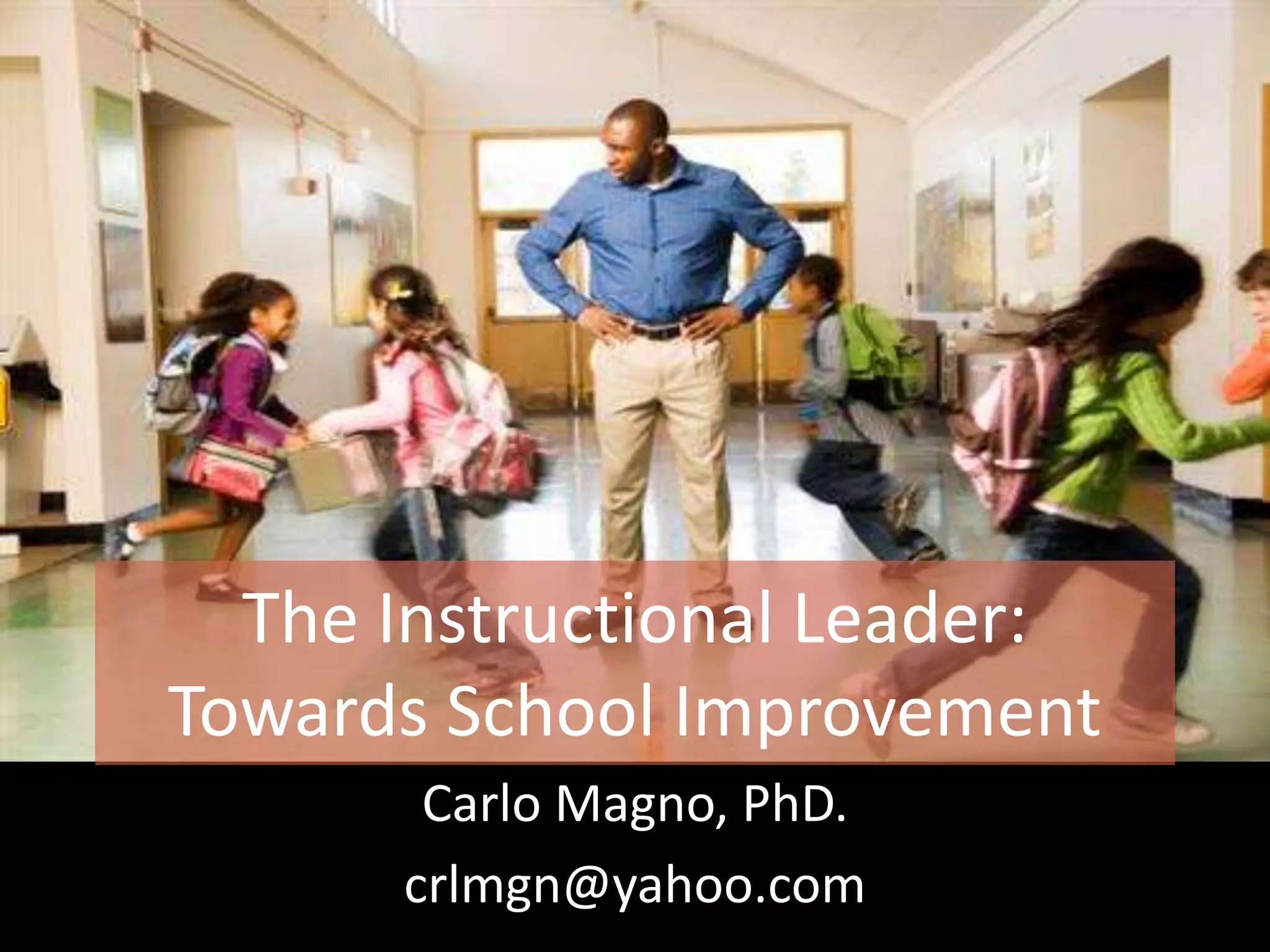The document discusses the concept of instructional leadership, emphasizing the need for school leaders to support high-quality instruction to improve student achievement. It outlines various functions, roles, and characteristics of effective instructional leaders, including curriculum involvement, data analysis, and fostering a culture of continuous learning. The document also addresses the Philippine professional standards for teaching, detailing competencies necessary for teacher effectiveness.

































